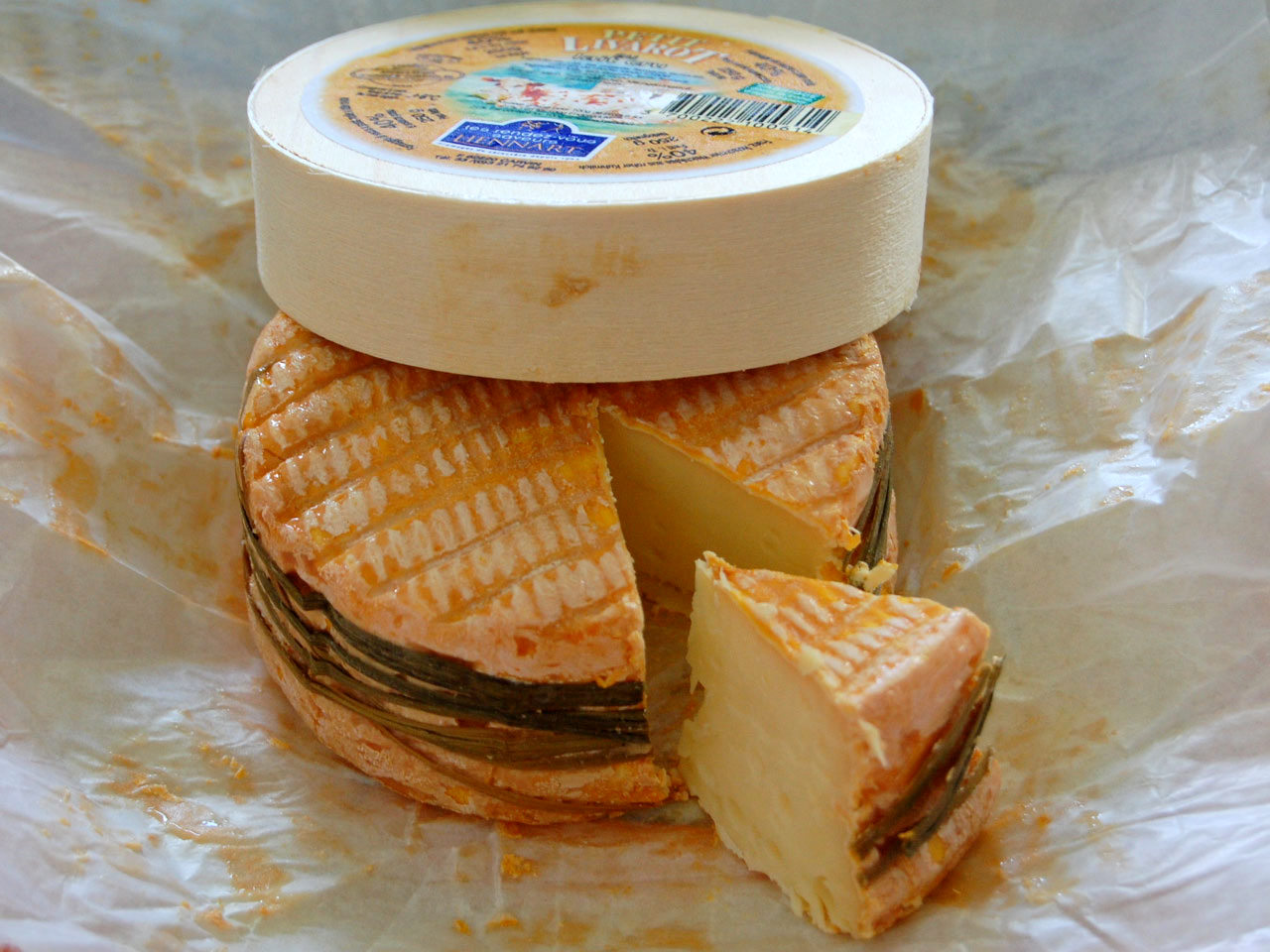Livarot, a cow’s milk cheese from Normandy nicknamed “the colonel”.
Livarot is a cheese made from raw or pasteurised cow’s milk. It has a soft pâte and a washed reddish rind.
The fat content is at least 40%.
Origins of Livarot

Livarot is one of Normandy’s oldest cheeses and takes its name from the town of Livarot in the heart of the Pays d’Auge.
In 1693, the Intendant Pommereu de la Bretesche mentioned it as being commonly eaten in Paris. Thomas Corneille speaks of it in his Dictionnaire Universel Géographique et Historique, published in 1708. However, Livarot had its greatest growth in the 19th century.
At that time, it was the most widely eaten cheese in the whole of Normandy.
Livarot production area
It is still made in Normandy in its original region, the Pays d’Auge. Its production area is limited to a few communes of the départements of Calvados and Orne.
The production of Livarot

The production of Livarot remains traditional.
The milk is partially skimmed and is set to ripen. The curd is divided into large cubes and is set to rest before being kneaded. The curd is put into moulds after the whey is extracted.
After the cheese is turned several times, it is removed from the mould to be salted with dry salt or brine all over its rind.
It continues to drain for 24 hours before being put in the cellar where it will stay approximately one month. There, it will be turned and washed (generally three times) with plain or slightly salted water, sometimes with annatto added. Livarots are then surrounded with their “laîches”.
Selection and tasting of Livarot
Always cylindral in shape, it is made in four sizes and the weight varies from 350 g to 500 g.
It is surrounded by 3 to 5 rings called “laîches” which were originally made of willow wood and are today in bulrush or paper, hence its nickname of “colonel”. It is sold either with or without its wooden packaging.
It is mostly enjoyed at the end of meals but it can also be used as an excellent snack.
Livarot provides an original note in a well-designed cheese platter.
It suits well-structured red-wines with body and also complements an AOC cider of the Pays d’Auge.
Livarot received the ‘appellation d’origine contrôlée’ label in 1975.




